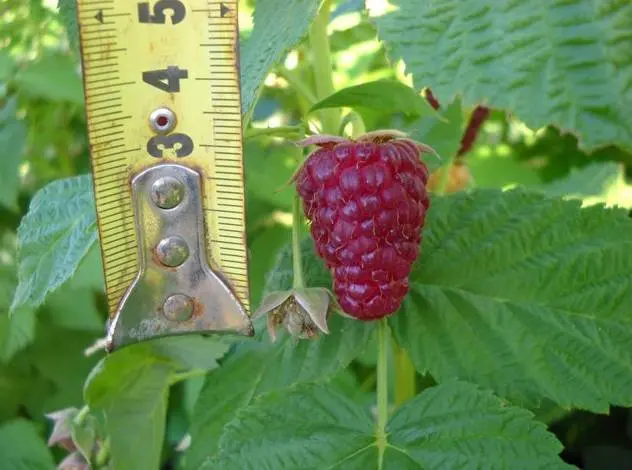Contents
The very name of this raspberry variety makes you think about its characteristics. Unattainable in terms of yield or size of berries, or their beauty, or, perhaps, in terms of the totality of characteristics? Reviews and photos of those who grew Inaccessible raspberries are often very contradictory and do not even coincide with the description of the variety given by the author himself. Perhaps this is due to the fact that raspberry Inaccessible, like many remontant large-fruited varieties, has a large supply of unrealized opportunities and, under different growing conditions, it is able to show completely different results.
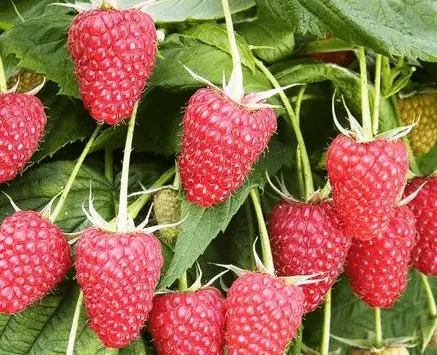
Variety description
Raspberry Inaccessible was bred in the late 80s of the last century by the famous scientist breeder V.V. Kichina at the All- Selection and Technological Institute of Horticulture and Nursery. Initially, raspberries were bred under the number R-34, sometimes this variety can also be found under the name Elita, although this name is generalized for many elite raspberry varieties from the collection of V.V. Kichin. Only after 1990, raspberries received their legal name, according to one version, in honor of their especially long fruiting period, which can last until the very first frost, inclusive.
The collection of raspberries can be done at short intervals, lasting 5-7 days, in total, thus, about 5-6 waves of fruiting are obtained in one season.
The bushes of the Inaccessible raspberry grow small, often reaching only 1,0-1,2 meters in height. The maximum possible plant height obtained with a high level of agricultural technology is 1,5-1,6 meters.
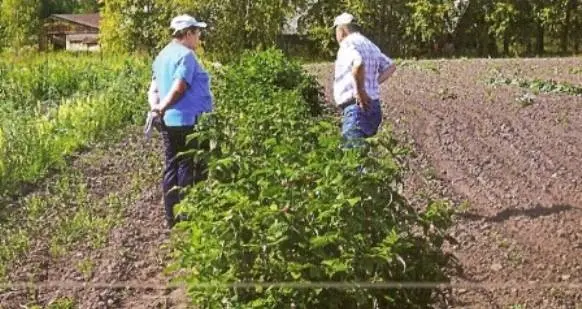
Therefore, do not be alarmed if the seedlings of this raspberry variety seem small to you and do not surprise you with their power. Adult shoots are also quite stunted, but they are strewn with berries almost along their entire length.
Annual shoots are also characterized by reduced internodes, practically without wax coating, small spikes are evenly distributed along the entire length of the shoots. When in a state of vegetative dormancy, they are distinguished by a yellow-brown color.
A raspberry bush is able to form about 6-7 replacement shoots and up to 10 root offspring, so you will not have problems with its reproduction.
The foliage of the bush is medium, it grows up to 70 cm wide. The berries begin to appear and ripen, starting from the tops of the shoots. The last berries ripen at the bottom of the bushes. The fruiting top has a length of about one meter and forms 2-4 branching orders. Fruit twigs are located along the entire length of the shoot and form small clusters.
In terms of yield, raspberry Inaccessible also claims to be one of the leaders, from one bush you can collect from 3 kg (on average) to 6 kg of berries (with intensive care) during the season.
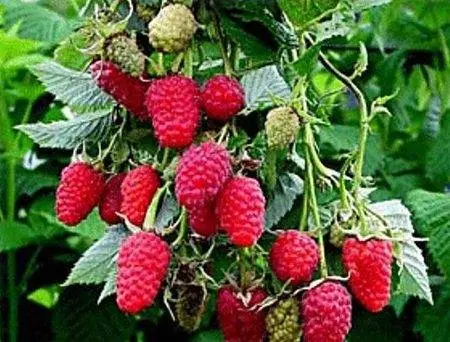
As for resistance to diseases and adverse factors, the opinions of gardeners are ambiguous here. Pests and diseases are able to bypass the raspberry Inaccessible side if it is grown in an annual crop, cutting off all shoots for the winter and leaving no chance for parasites to hide and spend the winter in a safe shelter. But raspberries do not endure extreme heat or heavy rains in the best way. In the first case, the bushes can temporarily stop in development, the berries can bake and dry out. In the second case – to lose taste.
But Raspberry Inaccessible has a high winter hardiness, there are reviews of its successful cultivation in regions with short, cold summers and harsh, long winters.
Characteristics of berries
Raspberry berries Unattainable are worthy of their speaking name.
- They have an elongated conical shape with a slightly flattened tip.
- The color of the berries is dark red, have a characteristic luster.
- Raspberries are collected in a brush.
- Raspberry Inaccessible refers to large-fruited varieties – the average weight of one berry is 4-6 grams, with proper care it reaches 10 grams. The berries are uniform and very attractive.

- In length, one berry can grow up to 4 cm.
- The pulp is juicy, the drupe is small, almost imperceptible in taste.
- The aroma and taste of raspberry Inaccessible cannot but be liked – a sweet, dessert taste with a harmonious fine sourness – the berries really melt in your mouth.
- But one cannot fail to mention a common drawback – the berry does not hold its shape very well and can fall apart. This shortcoming can be corrected by proper care and suitable conditions for development.
- As a result of this deficiency, many believe that raspberries of this variety do not tolerate storage and transportation.
- Well, at home – for fresh food and any preparations for the winter – the berries of the Inaccessible raspberry are simply magnificent.
Advantages and disadvantages
Raspberry Inaccessible has both pros and cons in its care, and what will be decisive for you depends only on you and your conditions.
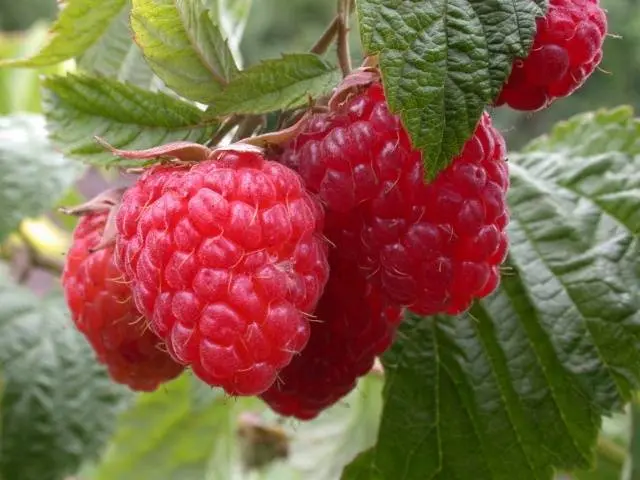
Among the undoubted advantages are:
- Early picking of berries, and in combination with extended fruiting, it makes it possible to harvest raspberries for almost two months.
- The compactness of the bushes makes it possible to use a compacted planting and increase the yield per square meter.
- Commodity appearance of berries and their high palatability.
Disadvantages of raspberries Unattainable are also available:
- Not very good heat tolerance, the need for shading in the southern regions.
- Seedlings may be prone to chlorosis with a lack of nutrition or poor lighting.
- Not too high cohesion of the berry and, as a result, low transportability.
- A large number of overgrowth can be considered as a disadvantage in some conditions, and as a virtue in others.
Features of cultivation and care
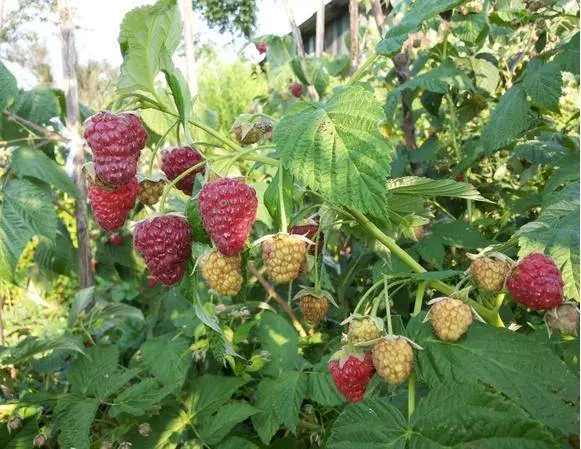
Raspberry Inaccessible is able to show its best side only with conscientious and attentive care. She is very partial to top dressing – even when laying raspberries, it is better to fill planting pits or trenches with 1,5-2 times more organic matter or mineral fertilizers. Do not forget about top dressing during the entire growing season. But you should not be zealous with nitrogen-containing fertilizers – it is better to use wood ash, superphosphate, as well as complex fertilizers with a predominant content of potassium and phosphorus and a mandatory set of trace elements.
You can use a compact fit. On average, 0,7 to 1,4 meters are left between the bushes when planting, depending on the row spacing, which can be from 1,5 to 2 meters.
With spring normalizing pruning, about 6-7 shoots per bush should be left – this is the optimal amount for obtaining abundant harvests.
At first it seems that due to their compactness and relative short stature, the bushes do not require a garter. But it is still better to arrange a single-row trellis in order to improve the illumination of the bushes, streamline their maintenance and make it easier for yourself to harvest.
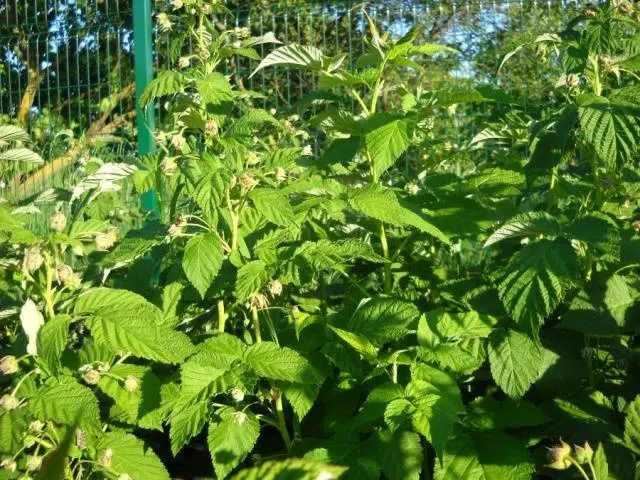
During the season, regular and abundant watering is necessary, especially in areas with a hot and arid climate.
As with all remontant raspberries, it is recommended to cut off all shoots at ground level before winter. This will provide an opportunity to get one, but a luxurious harvest at a time when the traditional raspberry is no longer in sight. If you want to grow Inaccessible raspberries with two harvests per season (summer and autumn), then the total result will still turn out to be less due to shifting the timing of autumn fruiting into winter.
When planting seedlings in the spring, if they have not yet had time to give a real harvest, it is recommended to tie them together for the winter, bend down and cover.
If frosts are already frequent in your area in September-October, it is better to throw spunbond or any other breathable covering material over medium-density raspberry bushes to protect the last berries.
Reviews of gardeners
The reviews of people who grew Inaccessible raspberries are very ambiguous – many have managed to find an approach to it and rejoice at its beauty and early and long-term yield. Others decided for themselves that for their conditions there are many other, no less attractive varieties of raspberries.
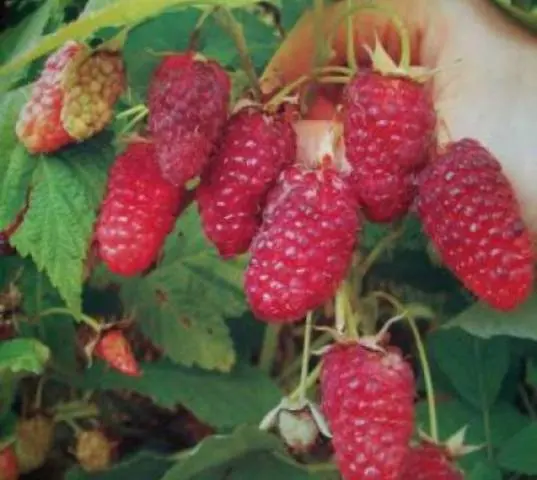
Conclusion
Raspberry Inaccessible is very interesting, first of all, for its fruiting time and the possibility of endless experimentation with the yield and taste of berries. She will definitely appreciate your attention to her and will thank you with juicy, tasty and beautiful berries.










